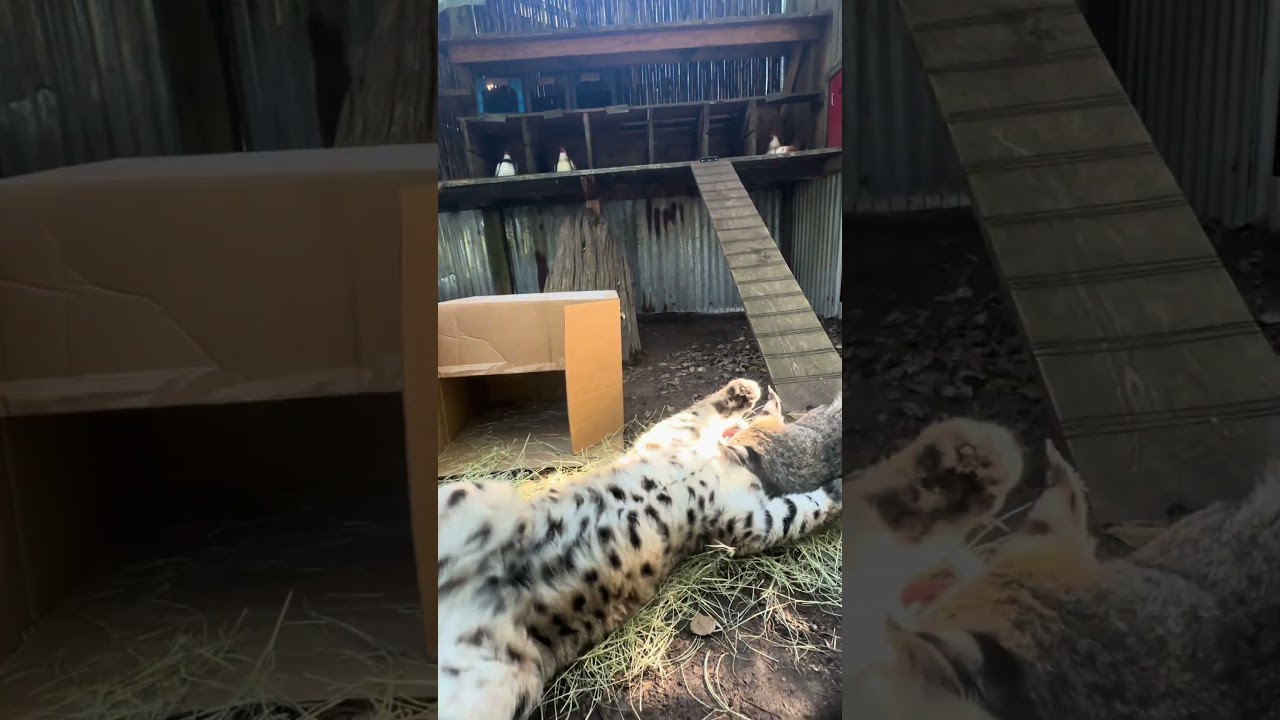- Understanding the importance and purpose of enrichment in zoo settings for bobcats Creole and Chinchuba.
- The role of zoological management in promoting animal welfare through diverse enrichment strategies.
- How urine-soaked enrichment items are used to stimulate the natural behaviors of captive bobcats.
- Insights into the biological behaviors and needs of bobcats in both wild and captive environments.
- Conservation efforts and the significance of zoos in preserving species like the bobcat.
Animal enrichment is a critical component in zoo management, reflecting a commitment to improving animal welfare. It’s particularly vital for species like bobcats, which exhibit complex behaviors. Enrichment involves providing environmental stimuli that encourage animals to demonstrate natural behaviors. For the bobcats Creole and Chinchuba, enrichment isn’t just a routine but a way to engage their senses and instincts in captivity. Daily protocols often include an assortment of items like puzzle feeders, scents, and physical structures, specifically designed to simulate challenges found in the wild.
The use of enrichment has become an essential practice in modern zoological institutions. It enhances the psychological and physiological health of captive animals. For Creole and Chinchuba, urine-soaked items serve a specific role. Bobcats use scent marking in the wild as a territorial communication method. This natural behavior is integrated into their enrichment regimen to encourage investigation, curiosity, and interaction. Urine from conspecifics or other species is used to create a multi-sensory environment that prompts the cats to explore, reassess their territory, and engage with their surroundings actively.
Effective zoo management incorporates a scientific understanding of species-specific needs. For Creole and Chinchuba, this means creating an environment that supports their predatory instincts and solitary nature. The enrichment provided must cater to both mental stimulation and physical activity. Climbing structures, hiding spaces, and varied terrains are typical features of a bobcat enclosure, offering opportunities for exercise, investigation, and rest. Such an environment not only keeps them physically active but also challenges their observational and decision-making skills.
Urine-soaked enrichment items vividly mirror the bobcats’ natural scent-marking behaviors. In the wild, bobcats use urination as a communication tool, marking territory to deter rivals and attract mates. By employing urine-soaked objects, zookeepers encourage Creole and Chinchuba to amplify their sense of smell and territory management. This form of enrichment motivates them to interact with their environment in a manner akin to their wild counterparts. The goal is to help maintain their natural behaviors even in a captive setting, contributing to their overall well-being.
Bobcats, solitary animals that roam vast territories, have specific biological needs that are crucial for their health. In captivity, replicating the cognitive and physical challenges they encounter in the wild is paramount. Enrichment activities, including scent trails, scratch posts, and varied hiding spots, help simulate a natural landscape. Bobcats have extraordinary hearing and vision, adapted for nocturnal hunting. Therefore, providing enrichment that includes aural and visual stimuli can significantly benefit their well-being.
Conservation efforts surrounding bobcats are vital, and zoos play a crucial role in these initiatives. While bobcats are not currently endangered, habitat loss and human encroachment pose significant threats. Zoos contribute to conservation by fostering breeding programs, educating the public, and participating in research initiatives. The visibility given to animals like Creole and Chinchuba helps raise awareness about the importance of preserving natural habitats and species for future generations.
Enrichment is a practice that extends far beyond simple amusement. It requires knowledge of animal behavior, welfare science, and ecological principles. The approach is carefully planned and monitored to suit the individual needs of animals like Creole and Chinchuba. It helps prepare these animals for potential reintroduction into their natural habitats should the opportunity arise. Zoologists and caretakers work closely to observe and document the animals’ responses to enrichment, allowing for ongoing refinement and improvement of strategies.
The bobcats Creole and Chinchuba represent a bridge between communities and conservation. By sharing their stories and behaviors through videos and public engagement, zoos can foster a deeper understanding and respect for wildlife conservation efforts. These educational opportunities inspire action and interest in conserving not just bobcats, but wildlife across the globe.
Bobcats are an integral part of the ecosystems they inhabit, serving as predators that help control populations of smaller animals and maintain ecological balance. Understanding and supporting the healthy existence of captive bobcats like Creole and Chinchuba reflects a broader commitment to animal welfare and conservation goals worldwide. Through these efforts, zoos educate and inform the public, cultivating a more informed and proactive approach to conserving our planet’s biodiversity.
*****
Source Description
Any guesses on which animal it is this time? 😹 #bobcat #audubonzoo #catsoftiktok #enrichment


